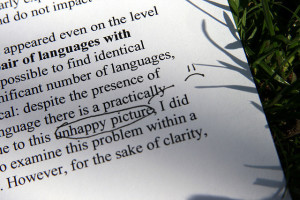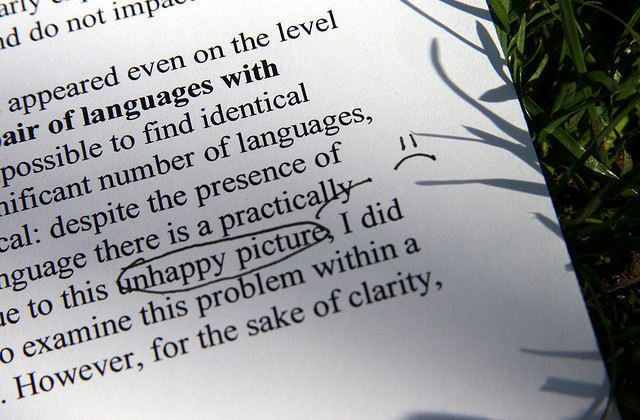Yikes! The Editor Needs an Editor!
 I will admit that I was a little harried last week trying to stay on top of things. That’s my excuse for being what some might call careless in my eagerness to get everything done, including a post on my own blog.
I will admit that I was a little harried last week trying to stay on top of things. That’s my excuse for being what some might call careless in my eagerness to get everything done, including a post on my own blog.
I wrote it, gave it a quick read, made it live and clicked that overdue item off my to- do list. And then I got this text from my proofreader/mom.
“You have some excellent ideas here but you need to do some proofreading. Read your post and you will see what I mean.”
I generally adhere to the concept that getting something done less than perfectly is better than not getting it done at all. “Better a diamond with a flaw than a pebble without,” as Confucius so eloquently put it. But I am rightfully chagrined on this one. I’m the writer and editor. Can you trust a tailor with holes in his pants?
The post was an unintentional demonstration of something I talk about frequently: The editing matters as much and sometimes more than the initial writing, and the editing includes proofreading.
Some of us may not find it as much fun as writing, and some of us may not feel we have the time.
But, of course, it’s hugely important. For starters, you may not actually have written what you thought you wrote. You could have missing words or too many words. You might have used the wrong word (roll vs. role for instance.) You might have too many commas or you might have them in the wrong places, which can entirely change the meaning of something. You risk confusing readers or worse, losing them altogether.
It’s tempting to think that you could be perfect the first time around, but that’s just not realistic or fair to put that burden on yourself. Better to write and be free in your writing and then come back to edit and proofread. And keep in mind that even the best writers need great editors and proofreaders.
Doesn’t this take time? Yes. And isn’t that one of the major reasons things like blog posts don’t get posted? Yes. Is it better to get something up rather than nothing? (As per Confucius.) That’s up to you. You need to decide how close to perfect it has to be.
So, if you want to do as I say and not as I did, here are a few tricks to try:
1) Follow my proofreader’s advice and read it out loud. Read slowly and carefully and really listen to the words. If you have the time, record yourself and play it back or have someone else read it to you.
2) Enlarge the page. This makes it easier to concentrate on each and every word.
3) Change the color or font. This tricks your brain into looking at it as if it were fresh.
4) Read it backwards focusing on each word.
5) Set it aside for some time and come back to it. Even ten minutes is good, but a few hours is likely better.
6) After you have made a change, read that section out loud again. It’s easy to introduce errors when correcting errors.
7) Use your finger or a pen and point to each word as you read it. This slows you down and helps you to see each part of the sentence better.
8) Find a good proofreader! (The proofreader who caught the errors in the last piece and checked this one is available and affordable if you are interested.)




2 Comments
Great post and reminder of every step that is required to put your best foot forward in each blog that we post!
May 7, 2015
Excellent points. Those with which I wasn’t familiar with will now become valuable tools in my editing toolbox. My mother taught me when I was in high school (40+ years ago) to read aloud anything that I thought was ready for the world. I applied that three times (yes, it took considerable time and a few gallons of lemonade) to my 2013 novel, “Bead of Sand.” Upon reading the finished work from the publisher, I only found five or six small errors (primarily typographical) in 388 pages. It’s worth it!
July 21, 2015